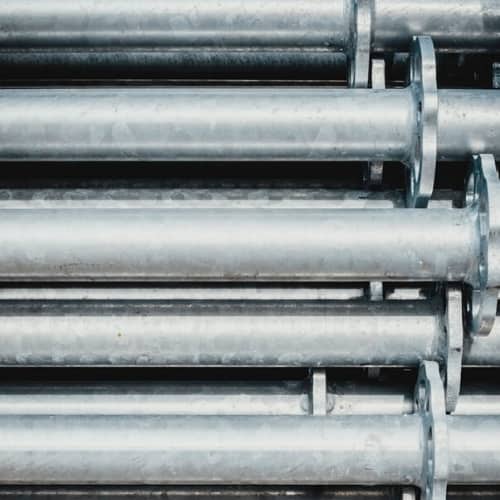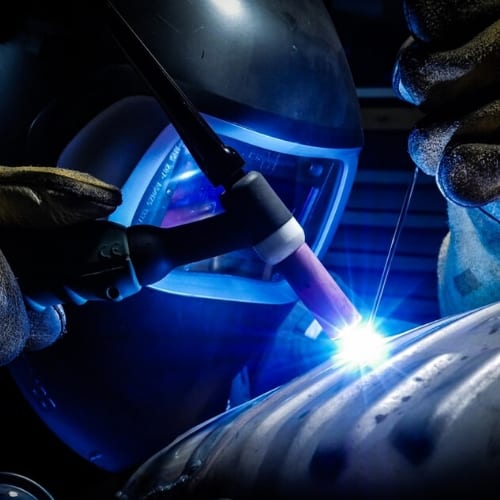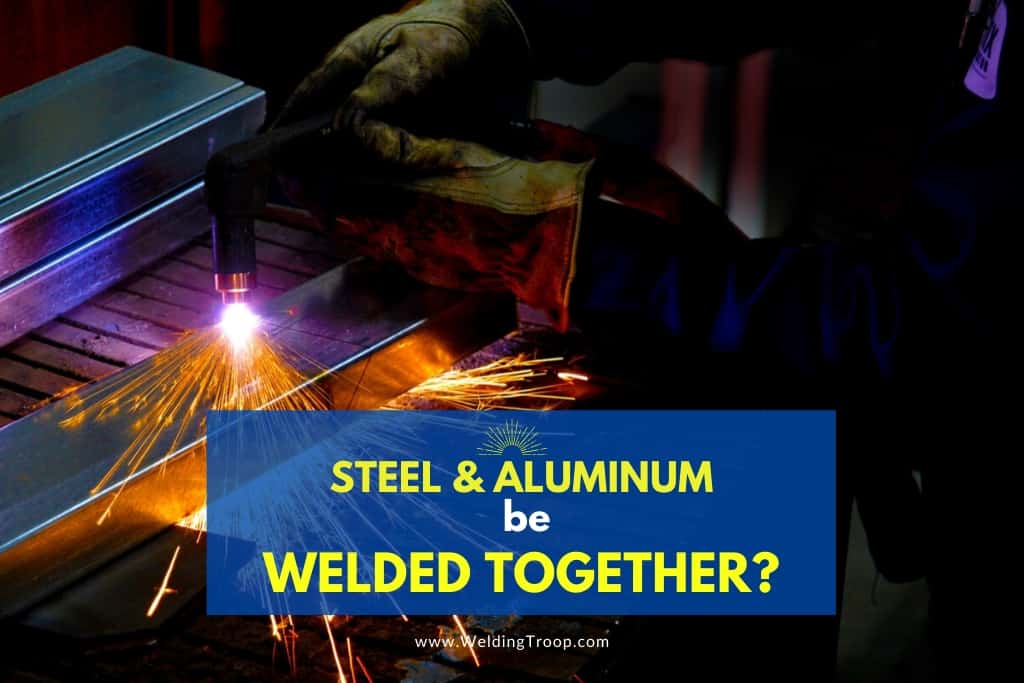Welding projects typically involve the fusing of similar metals. Have you ever asked yourself if steel and aluminum can be welded together? However, you may occasionally find yourself dealing with different materials, such as steel and aluminum. With different melting points, porosity, and other characteristics, you may wonder if you can effectively weld these materials together.
So, can steel and aluminum be welded together? Steel and aluminum cannot be welded together using traditional welding techniques. The steel is too brittle. However, there are several workarounds for fusing dissimilar metals. Using bimetallic transitions or applying a special coating may provide satisfactory results.
I’ve found that each metal comes with distinct characteristics that influence the welding process. If you try to weld aluminum and steel, you’ll end up melting the aluminum before the steel reaches its melting point. To avoid creating globs of melted steel, I searched for suitable techniques. Here’s what I found.
Table of Contents
Why Can’t Steel and Aluminum Fuse?
Steel and aluminum have very different metallurgic properties and melting points. Steel is a dense, resilient material while aluminum is malleable, making it easy to bend and shape.
When you weld similar metals together, they need to reach their melting temperature. The welding arc heats the metals until they start to melt together. As the metals cool, they remain fused. This is difficult to achieve when the metals melt at different temperatures.
As the denser material, steel has a higher melting point. It needs to reach about 2500 degrees Fahrenheit before it begins to melt. Aluminum is softer and melts at about 1200 degrees Fahrenheit.
Here, you can find an article from our website about how long does it take to learn welding?
If you try welding a steel workpiece to a piece of aluminum, the aluminum would liquify before the steel reaches its melting point. The combination of the metal materials would also create a brittle compound, resulting in a weak fusion.

Techniques for Fusing Dissimilar Metals
It turns out that fusing dissimilar metals is a common challenge for welders so they’ve created a variety of techniques for dealing with it. Some of the most used methods include:
- Mechanical fasteners
- Bonding agents
- Brazing
- Bimetallic transitions
- Coating
If possible, try to replace one of the metals with a more suitable material. The second-best option is to use mechanical fasteners. Adding rivets or bolts to secure one piece to the other eliminates the need to fuse dissimilar metals.
Can You Bond Aluminum to Steel?
Depending on the sizes and shapes of the workpieces, applying an epoxy may work. However, you need a large surface area to apply the bonding agent. The connection is also likely to remain structurally weak compared to using one of the other techniques.
Bonding is also a time-consuming process. You first need to mix the bonding agent and then apply it to the aluminum and steel. You then need to wait several days for it to dry and cure.
When bonding aluminum to steel, the surface of both materials needs to be roughed up to improve the bond. The epoxy should also suit your application. Companies make bonding agents for marine applications and projects that require increased tensile strength.
How to Use Brazing to Join Aluminum to Steel
Brazing isn’t the most effective method for joining aluminum to steel but it can work for certain applications. Brazing is used for the large-scale production of stainless steel pots and pans with aluminum base plates. For hobbyists, the success of brazing depends on the surface area.
Using a two-stage brazing method may allow you to join aluminum and steel when working with a large surface area. The joint will have less strength compared to a typical weld with similar metals but may hold when the pieces have a good mechanical fit.
This method requires two types of brazing filler metals — 56% silver braze and an aluminum alloy-based filler. The silver braze is applied to the steel and the aluminum braze is applied to the aluminum. The two pieces are then joined.
The melting points of the filler metals are higher compared to aluminum and lower compared to steel, acting as a transition between the dissimilar metals.
Using Bimetallic Transitions to Fuse Aluminum and Steel
A bimetallic transition insert provides a more secure transition compared to the brazing technique. As the name suggests, bimetallic transition inserts are pieces that you insert between dissimilar metals to create a transition. In this case, one side of the insert is made from aluminum and the other side is made from steel.
You weld the aluminum side to the aluminum workpiece and the steel side to the steel material. Technically, this option relies on bonding as the insert piece is pre-bonded. The method used to bond the materials include:
- Hot rolling
- Explosion welding
- Friction welding
- Flash welding
When using a bimetallic transition piece, avoid overheating the inserts. Overheating may create the same brittle intermetallic compound that occurs when trying to directly weld aluminum to steel.
Start with the aluminum side, as it requires a lower temperature to reach its melting point. The aluminum material also helps create a larger heat sink when welding the steel side to the steel material. This reduces the risk of overheating the transition piece.

Applying a Coating to Weld Steel and Aluminum Together
Applying a coating is a workaround that allows you to fuse aluminum to aluminum-coated steel. The steel is coated in an aluminum-silicon alloy through a process called hot dip aluminizing. As the aluminum alloy cools on the steel surface, it creates a tight metallurgical bond.
The resulting material is called aluminized steel. The material has a thin outer layer of aluminum oxide and a steel core while the middle layer is a mix of steel, aluminum, and silicon.
As the outer surface of the steel is now comprised of aluminum alloys, you can weld aluminum pieces to it. I wouldn’t recommend this method unless you have a lot of welding experience as it requires precision.
The heat from the weld may cause the aluminum coating to burn away, which also produces hazardous gases. After the aluminum coating burns away, the aluminum piece cannot weld to the steel core.
Success is only achieved when directing the arc away from the steel and using care to allow the molten aluminum to flow onto the aluminized steel surface. Even with care, the coating may start to bubble and crack, resulting in a brittle connection.
Conclusion: What’s the Best Method for Welding Aluminum to Steel?
Can steel and aluminum be welded together? Welding aluminum and steel without an additional component is almost impossible. The aluminum may become disfigured or completely liquify before steel can reach its melting point.
In the end, bimetallic transition inserts produce the best connection between aluminum and steel. The pre-bonded inserts offer strong structural support for most applications. From securing an aluminum pipe to a steel pipe to adding an aluminum deckhouse to a steel deck on a ship, you can use bimetallic inserts for small or large projects.
The drawback is that you need to find inserts that fit your mechanical design or redesign your configuration to fit existing inserts.
If inserts don’t fit your specific needs, coating or brazing the materials may work. Just remember that these methods may not provide the strongest connection and require more skill.
You may also consider reworking your design to eliminate the need to weld aluminum to steel. If possible, replace one of the materials or find a way to join them through mechanical fastening.
Recommended Reading
Can MIG Welders Weld Aluminum? | How to successfully weld Aluminum?
How to Weld Aluminum at Home >> A Beginner’s Guide
What are the Advantages and Limitations of Plasma Arc Machining?
Welding Stainless Steel to Aluminum Welding >> Tutorial video

